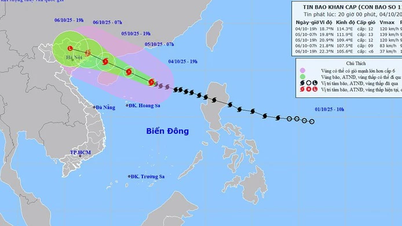
From international experience to domestic needs
The development of derivatives markets in many countries around the world is always associated with the process of diversifying products based on indexes. In addition to futures contracts on index baskets with a small number of constituent stocks, many markets also simultaneously deploy futures contracts on larger index baskets to increase representativeness. Japan does not stop at the Topix Core 30 index but also has the Nikkei 225; Taiwan (China) maintains both the FTSE TWSE Taiwan 50 and TPEX 200; France, in addition to the CAC 40, also added the FTSEurofirst 100; South Korea not only develops the KOSPI 200 but also expands to the KOSDAQ 150 and KRX 300.
International practice shows that the deployment of additional futures contracts based on indices with a large number of constituent stocks is to create a difference from existing products, help diversify the portfolio, and at the same time avoid the situation where the market only focuses on a single contract. This is also a valuable experience that Vietnam can refer to in the process of perfecting the derivatives market.
After nearly 8 years of operation, the Vietnamese derivatives market has made great strides, especially with the VN30 index futures contract product. In the period 2018-2024, the average growth rate reached 20.57%/year, of which 2020 - the time strongly affected by the Covid-19 pandemic - recorded the highest growth rate, up to 78.5% compared to 2019.
In 2024 alone, the total trading volume of VN30 index futures contracts will reach 52.76 million contracts, the average volume per session will reach 211,037 contracts (down 10.32% compared to 2023), but the average trading value will still increase by 3.96%, reaching VND 27,063 billion. The volume of open interest (OI) will also increase sharply, from 8,077 contracts at the end of 2017 to 45,332 contracts at the end of 2024, an increase of 5.6 times. 2024 will also record new records: the session on April 16 reached 420,128 contracts, while on November 18, OI reached 72,740 contracts.
Not only has the trading scale increased, but the number of accounts participating in the derivatives market has also continuously expanded. By the end of December 2024, the entire market had 1,865,961 accounts, 1.25 times higher than at the end of 2023. Thanks to that, the derivatives market has increasingly affirmed its role as an important risk hedging channel, helping to retain capital flows in the market even in periods of decline in the base, as in the case of 2020 when the market was affected by the pandemic but derivatives liquidity grew dramatically.
However, the major limitation at present is that the number of products on the derivatives market is still too small. Government bond futures have not really attracted liquidity, causing investors' attention to be almost entirely focused on a single product, the VN30 index futures contract. This poses a risk of imbalance and potential risks, and emphasizes the urgent need for new products. Therefore, the implementation of index futures contracts with a larger number of component stocks such as VN100 is in line with international trends and meets the practical needs of domestic investors.
It is no coincidence that the International Organization of Securities Commissions (IOSCO), in its 2003 report on “Stock Indices and Derivatives on Indices”, set out key principles for designing derivative products and selecting indices as underlying assets. Accordingly, the index basket needs to have a large enough number of stocks to ensure representativeness and limit the extreme impact of fluctuations from a few individual stocks. At the same time, the component stocks must be distributed evenly across many sectors and industries to increase dispersion and reflect a comprehensive picture of the market. Another mandatory requirement is liquidity, because only stocks with high liquidity can ensure continuous trading and minimize the risk of supply-demand imbalance. In addition, IOSCO also recommends applying a capitalization limit for each stock to prevent a few large stocks from dominating the entire index.
Based on these criteria, VN100 emerged as a reasonable choice. This index was put into operation in 2014, currently has simulated ETF funds, with high stability and liquidity. More importantly, VN100 has a wide capitalization coverage, with 87.69% of the total capitalization of the entire HOSE market as of mid-September 2025, while VN30 only accounts for 69.58%. In addition, the capitalization ratio of the 10 largest enterprises in VN100 only stopped at 50.51%, significantly lower than VN30 (63.66%). This helps VN100 futures contracts to be less affected by the extreme fluctuations of the group of leading capitalization stocks, thereby reflecting the general market developments more honestly and stably.
VN100 familiar design, distinct advantages
The VN100 index futures contract model is designed based on the basic framework of the VN30 index futures contract, which has been approved by the management agency and officially announced on the information system of the Stock Exchanges and the Vietnam Securities Depository and Clearing Corporation (VSDC).

By design, the underlying asset of the product is the VN100 index. This index is formed from the VN Allshare Index (VNALL) of the VN-Index, which includes both the VN30 and VNMidcap indices. After determining the VN30 basket, the remaining constituent stocks of VNAllshare will be ranked in descending order of capitalization and selected into the VNMidcap basket with a quantity of 70 stocks, according to the provisions of the Code of Conduct for Construction and Management of the HOSE-Index version 4.0.
Regarding the basic parameters, the VN100 futures contract has a size calculated by multiplying 100,000 VND by the VN100 index point, the contract multiplier is 100,000 VND. The price fluctuation range in the session is set at ±7% compared to the reference price, the volume limit is 500 contracts per order. The maturity month is flexibly designed to include the current month, the next month and the last two months of the next two quarters. The final settlement price is determined by the average index in the last 30 minutes of the maturity date, after eliminating the 3 highest values and 3 lowest values, to ensure fairness and prevent the possibility of price manipulation.
It can be seen that the technical regulations of the contract, although strict, are the necessary foundation for the product to operate transparently and sustainably. The biggest difference compared to the VN30 futures contract is the underlying assets, as the VN100 provides a more comprehensive picture of the market. Not only reflecting the leading stocks (bluechip), this index also covers the midcap group with good liquidity, thus becoming an effective tool to prevent risks at the whole market level, instead of focusing on just a group of large stocks.
The launch of VN100 index futures contracts comes at a time when the Vietnamese derivatives market has passed its initial stage and needs more momentum for sustainable development. This is a move that meets the practical needs of investors and is in line with strategic orientation. With a large capitalization coverage, the ability to limit fluctuations from the top capitalization stocks and a tight contract design, VN100 is expected to become a key product, bringing new vitality to the derivatives market.
The launch of the VN100 futures contract is not only a technical milestone, but also demonstrates the determination of the management agency in expanding and enriching the product ecosystem. Investors have more tools, the market increases in depth, getting closer to international standards, while the goal of sustainable development of the Vietnamese stock market will also take an important step forward.
Source: https://nhandan.vn/hop-dong-tuong-lai-chi-so-vn100-buoc-di-moi-cho-thi-truong-chung-khoan-phai-sinh-viet-nam-post912901.html


![[Photo] Bustling Mid-Autumn Festival at the Museum of Ethnology](https://vphoto.vietnam.vn/thumb/1200x675/vietnam/resource/IMAGE/2025/10/4/da8d5927734d4ca58e3eced14bc435a3)


![[Photo] General Secretary To Lam attends the 8th Congress of the Central Public Security Party Committee](https://vphoto.vietnam.vn/thumb/1200x675/vietnam/resource/IMAGE/2025/10/4/79fadf490f674dc483794f2d955f6045)

![[Photo] Solemn opening of the 8th Congress of the Central Public Security Party Committee, term 2025-2030](https://vphoto.vietnam.vn/thumb/1200x675/vietnam/resource/IMAGE/2025/10/4/f3b00fb779f44979809441a4dac5c7df)













































![[VIDEO] Summary of Petrovietnam's 50th Anniversary Ceremony](https://vphoto.vietnam.vn/thumb/402x226/vietnam/resource/IMAGE/2025/10/4/abe133bdb8114793a16d4fe3e5bd0f12)

![[VIDEO] GENERAL SECRETARY TO LAM AWARDS PETROVIETNAM 8 GOLDEN WORDS: "PIONEER - EXCELLENT - SUSTAINABLE - GLOBAL"](https://vphoto.vietnam.vn/thumb/402x226/vietnam/resource/IMAGE/2025/7/23/c2fdb48863e846cfa9fb8e6ea9cf44e7)

































Comment (0)